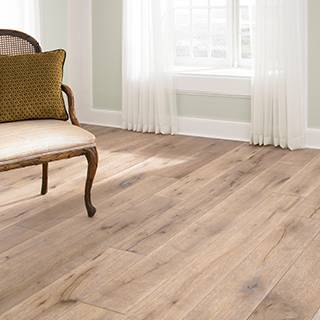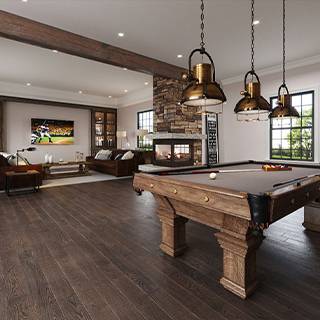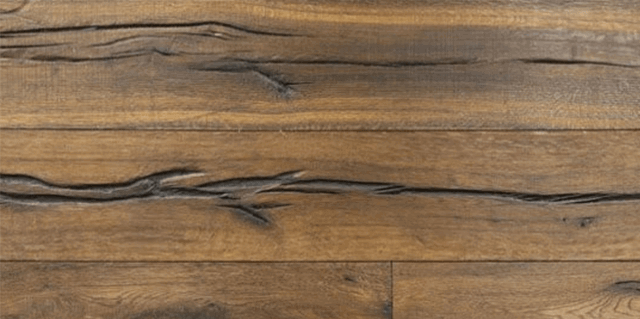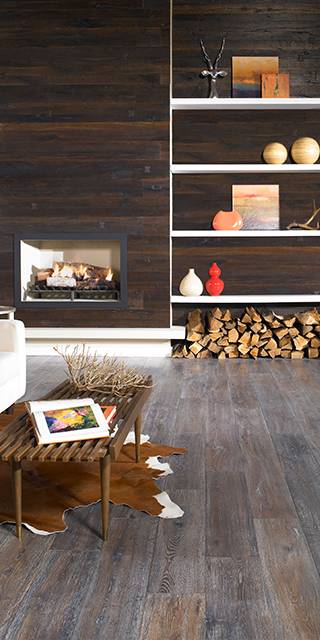Superlative Hardwoods: Stats & Facts
August 31, 2015
It is well known that Oak is far and away the most commonly used species for hardwood floors, especially in the United States. It was recommended nearly three times as often as other species by the designers who participated in our annual design survey this year, Red and White Oak combined consistently make up more than 60% of total hardwood flooring sales, and Oak trees account for more than half of our national hardwood forests. But what about the other “mosts” in the hardwood world? Read on and find out.
The Most Expensive Hardwoods
As it stands to reason, the most expensive hardwoods are also the rarest. Most of these are rare enough that they are seldom, if ever, used for flooring, and when they are, it is usually only as an inlay or accent. The winners of this special distinction?
Gabon Ebony (Diospyros dendo) from Central West Africa, Madagascar Ebony (Diospyros perrieri) from Madagascar, and Macassar Ebony (Diospyros celebica) from Indonesia, can all be found in the U.S. market, though one must be very careful to ensure that these highly endangered species have been legally and sustainability sourced. For years, the wood from these trees has been hihgly valued for its almost stone-like qualities: uncommon hardness and dimensional stability, minimal to indiscernible grain, and a consistency of color (practically black at the heartwood) that is all but unmatched. Current prices for Ebony run as high as $150/ square foot, so an ebony floor falls well outside the budget of most home improvement products. A more realistic option? Choose a close-grained domestic wood like Maple and finish it with an ebony stain.
African Blackwood, also called Mpingo, is widely regarded as the most expensive commercially available hardwood. Its scientific name is Dalbergia melanoxylon and it is native to the dryer regions of southern Africa. Once regarded as a kind of Ebony, Mpingo now holds its own place as one of the most valuable woods in the world. Its dark, almost black heartwood is uncommonly dense and hard and offers remarkable dimensional stability, making it popular for woodwind instruments like clarinets and oboes. However, this denseness makes it a very difficult wood to work with, a quality which, combined with its relative rarity and consequent high price (upwards of $130/ square foot) make it an unrealistic option for flooring.
The Hardest Hardwoods
 Typically, the hardness of wood is measured by subjecting it to the Janka hardness test. This yields a Janka rating expressed in pounds of force that allows for relatively uniform comparison of the hardness of various species of wood. As a standard of comparison, consider that Northern Red Oak, an excellent flooring choice, has a Janka rating of 1220-1290, depending on the variety. Hickory, the hardest domestic hardwood, has a rating of 1820. As it happens, Ebony and African Blackwood rate at 3080 and am incredibly hard 3670, respectively.
Typically, the hardness of wood is measured by subjecting it to the Janka hardness test. This yields a Janka rating expressed in pounds of force that allows for relatively uniform comparison of the hardness of various species of wood. As a standard of comparison, consider that Northern Red Oak, an excellent flooring choice, has a Janka rating of 1220-1290, depending on the variety. Hickory, the hardest domestic hardwood, has a rating of 1820. As it happens, Ebony and African Blackwood rate at 3080 and am incredibly hard 3670, respectively.
The hardest known wood, meanwhile, rates at a tool-destroying 4570. In fact, its name, Quebracho, comes from the Spanish “quebrar hacha”, which literally translates to “axe breaker”. Though it is used as lumber in its native South America, it is rarely available in the United States. The generally accepted winner of the hardest commercially available wood contest, then, tends to be a species called Lignum Vitae, which has a Janka rating of 4390. Unfortunately, this remarkable quality has led to its being harvested almost to extinction. Of course, a wood this hard would be almost impossible to mill for flooring, even if it were abundant enough to be used as such. A better option is to choose a harder wood like Hickory or Brazilian Cherry (Janka rating 2350) with a factory applied finish for increased durability.
The Most Abundant Hardwoods
North America
Well, we already know that Oak accounts for some 52% of the hardwood forests in North America, with Red Oak (Quercus rubra) the most abundant. The next most common in Poplar, but this species makes up only about 1/10th of North America’s hardwood forests, followed distantly by Maple at about 5%.
Worldwide
While Brazilian Cherry is probably the most commonly used exotic species when it comes to flooring (it generally makes up between 3 and 5% of hardwood flooring sales each year), it is not necessarily the most abundant species. So what is? This is a difficult question to answer. Efforts to log tree species across the planet are few as the challenges to doing so are many and complex. It involves travel to remote areas as well as the cooperation of governments and landowners, many of which have more pressing concerns and some of whom would rather not have logging activity and forest health looked at too closely. Add to this the lack of a universal authoritative database of the world’s trees, and it becomes difficult to get an accurate read on global species distribution. What is known with relative certainty is that about a third of all the world’s trees can be classified into five species groups: pines, oaks, spruces, firs, and beeches. Of these, only two – oak and beech – yield hardwood, though pine, technically a softwood, is often used in flooring as it is as hard as many hardwood species.
Special Trees
Though many of the most remarkable trees are not hardwoods and would not generally be recommended for flooring, we though we would mention some here, to honor the magnificence of trees in general.
Tallest living tree
Sequoias, and in particular Sequoia sempervirens, or Coastal Redwoods, are thought to be the tallest trees in the world. The tallest of these? Hyperion, a resident of Redwood National Park, measuring almost 380 ft tall and thought to be something like 700-800 years old.

Biggest living tree
The biggest known tree by volume is another Sequoia, a Giant Sequoia in Sequoia National Park called General Sherman, whose trunk volume has been estimated at more than 52,500 cubic feet. For reference, the volume of an average Red Oak would probably be about 1300-1500 cubic feet. Now this title only applies to single-stem growth. Aspen trees, for example, grow in colonies, with hundreds of trunks stemming from what is technically a single tree, making trunk volume rather difficult to calculate.
Widest living tree
The Montezuma Cypress in Oaxaca, Mexico, is thought to be the tree with the greatest girth, boasting a diameter of more than 38 feet. Some argue, however, that Sunland Baobab‘s namesake tree is better deserving of the title, since the 38 foot measurement of the Cypress includes empty space between the tree’s natural buttresses. The Baobob in question has a diameter of 35 feet, enough to house a bar an wine cellar in its hollow trunk.
Oldest living tree
This is, again, a category up for debate. Typically, the age of a tree is determined by measuring its growth rings or taking a sample from its core that can be dated. However, growth rings only appear in trees that experience seasonal changes and the cores of very old trees often become hollow as their lifeless heartwood decays. Consequently, aging very old trees can be an imprecise business. Nevertheless, there seems to be some consensus that the oldest living single-stem tree is the Great Basin Bristlecone Pine, thought to be more than 5,000 years old. Again, though, the Aspen raises another difficulty as some argue that its age should be recorded according to the age of the colony. In that case, the oldest living “tree” becomes the Pando colony on Utah, thought to be some 80,000 years old.

General Sherman and Pando Colony By Famartin (Own work) CC BY-SA 3.0, via Wikimedia Commons








